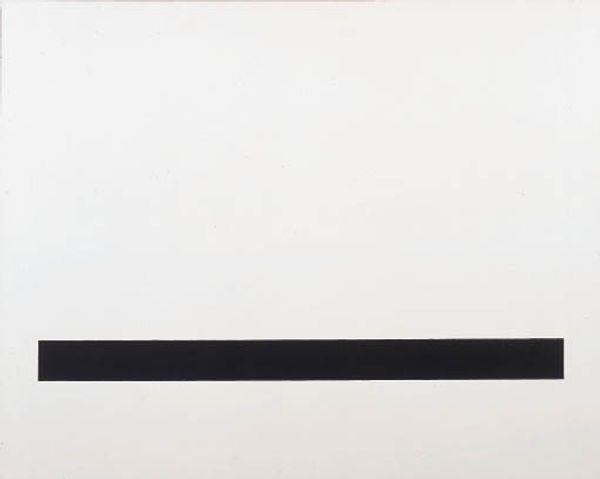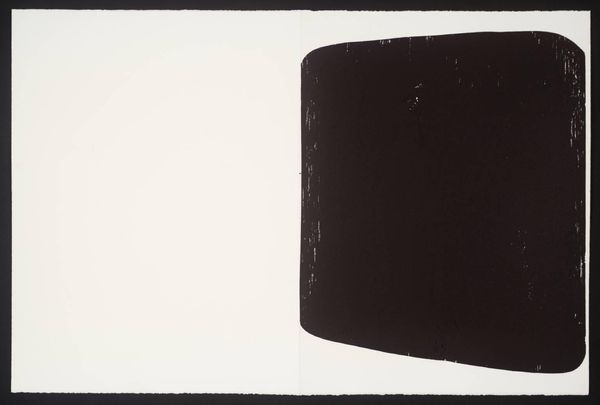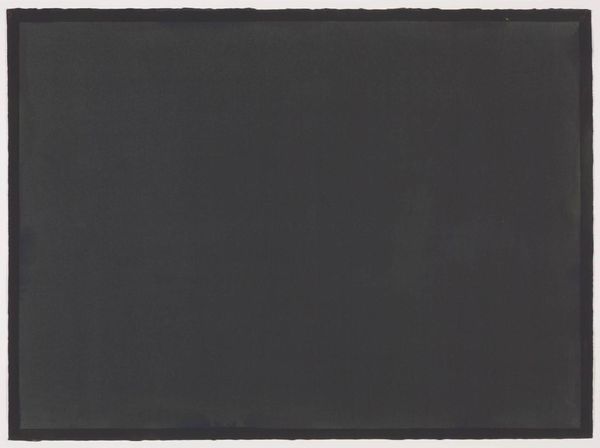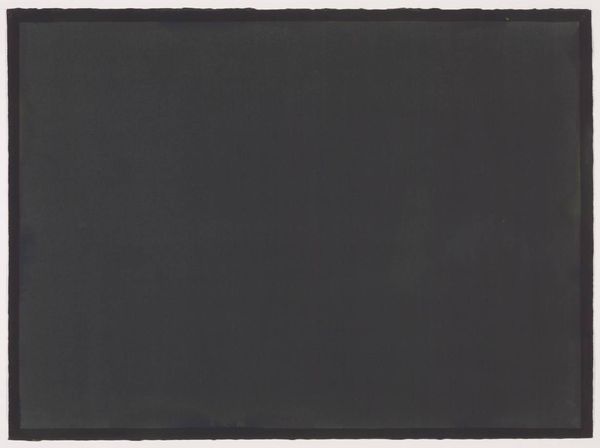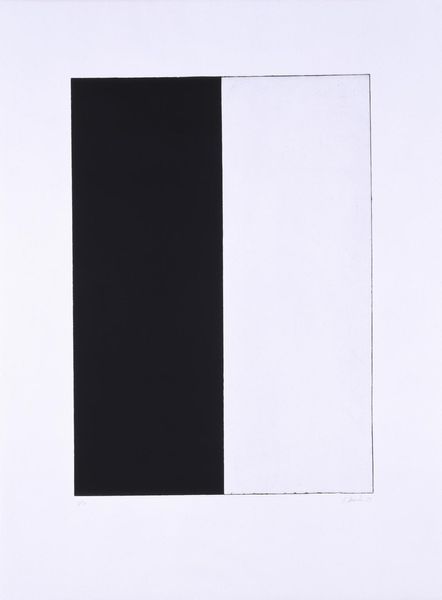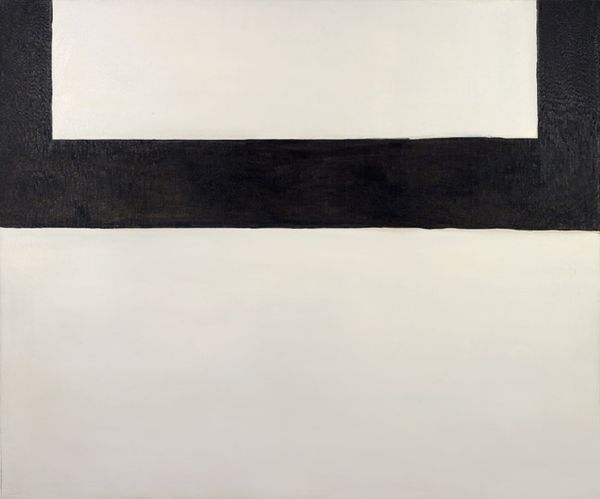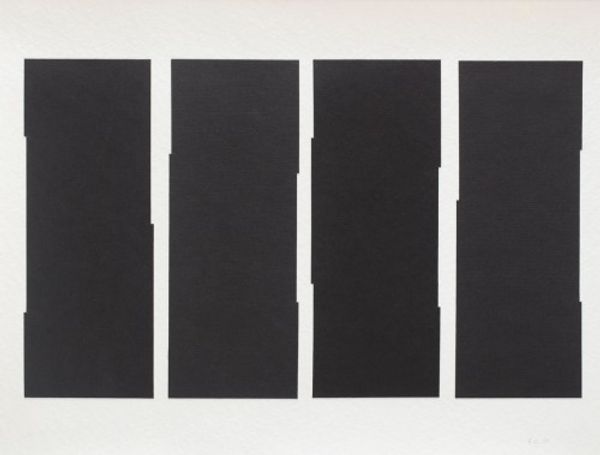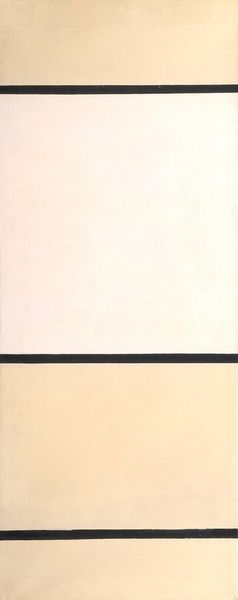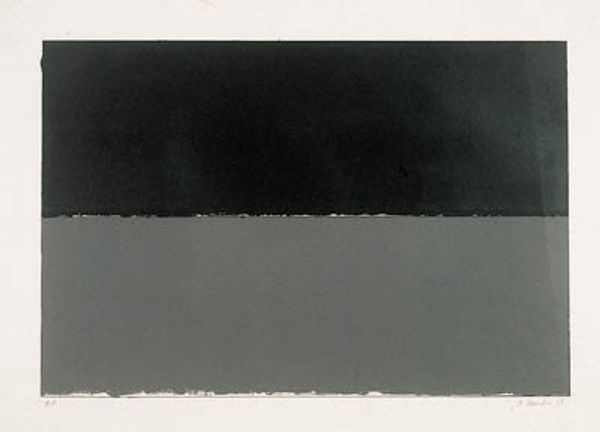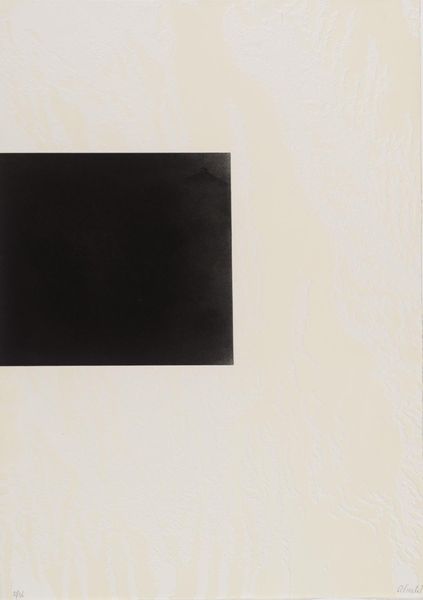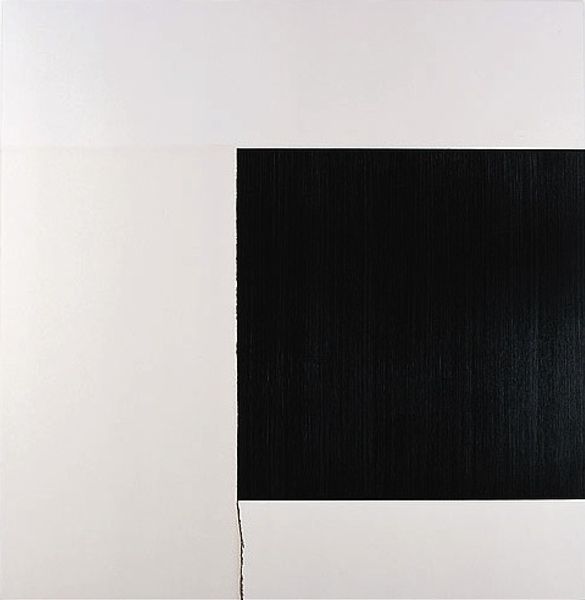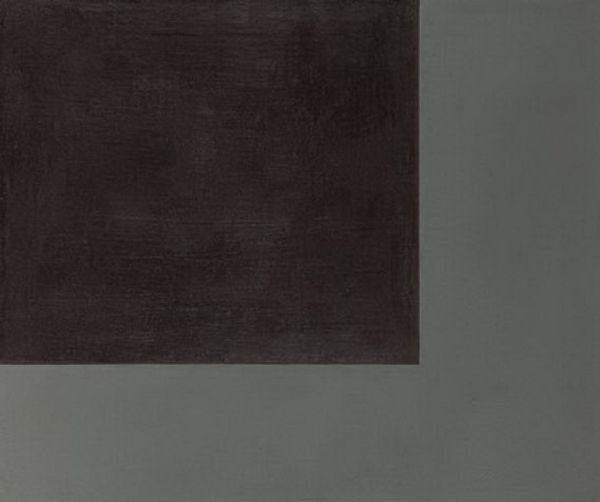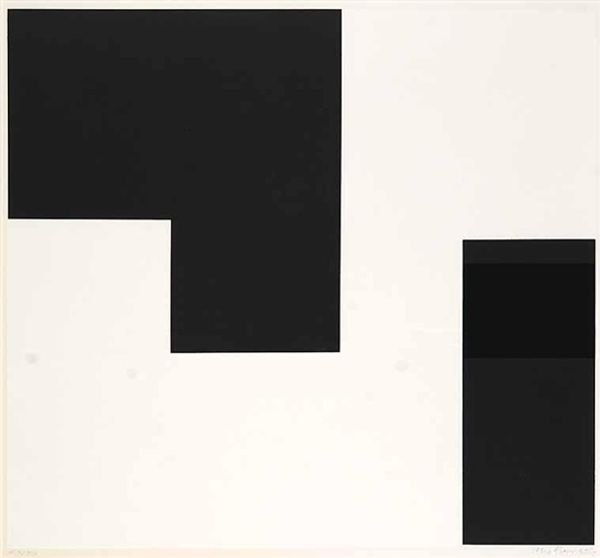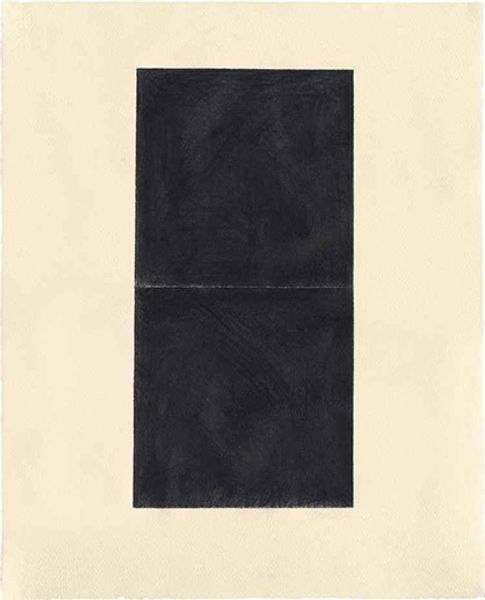
painting, acrylic-paint
#
abstract-expressionism
#
painting
#
minimalism
#
acrylic-paint
#
geometric
#
abstraction
#
hard-edge-painting
Dimensions: overall: 162.7 x 244.4 cm (64 1/16 x 96 1/4 in.)
Copyright: National Gallery of Art: CC0 1.0
Curator: We’re standing in front of Tony Smith’s "Untitled," a painting created in 1962. It's composed of a simple black rectangle set against a much larger expanse of off-white. Editor: It's incredibly stark. That black form seems so resolute, so devoid of anything extraneous. There's a certain coldness, a sense of detachment. What's the resonance there, in your reading? Curator: Smith was deeply invested in geometry and the emotional weight of forms. The rectangle can be seen as a symbol, distilled down to its most fundamental state. We see such strong visual weights used in many earlier periods in symbolic depictions, think the heavy robes worn in the Renaissance compared to more loose depictions in Rococo and its sense of fleeting elegance. Its minimalism lends itself to the potential to act as a grounding visual anchor, an absence which can be filled with deeper symbolic meanings. Editor: It makes me think about material limits and what an artist can even *do* to create something, to call it “art”. I wonder what process or specific type of acrylic Smith was interested in. Was it an innovative material, or an especially manufactured process that he might have wanted to draw attention to by emphasizing such geometric regularity in the brushstrokes? Did the surface have to be specifically manufactured and what was that like in the early 60s? Curator: It would make sense he chose it for its precision; hard-edge painting was about absolute clarity. It’s like reducing representation to pure essence – even a specific type of brushstroke! Editor: But doesn't that essence get lost if the production means weren’t so specific to make the painting happen? The means are intrinsic to whatever symbolic representation this painting achieves! I’m curious whether it was the pursuit of industry standards of mass production or attempting something brand new? And how did *that* influence its minimalist meaning. Curator: Interesting points, indeed. In looking at "Untitled", the impact resides in that dialogue between surface, color, and that absolute geometry—creating space for our interpretations to surface. Editor: Right. It is ultimately about that careful control of materiality which then produces meaning as opposed to representing any outside subject.
Comments
No comments
Be the first to comment and join the conversation on the ultimate creative platform.
